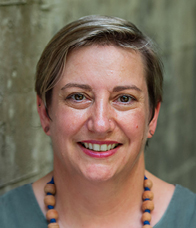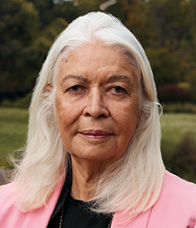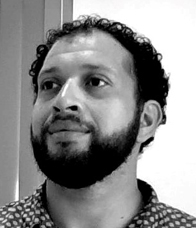The first stage of the Ngurra: The National Aboriginal and Torres Strait Islander Cultural Precinct architectural design competition has now concluded with the shortlisting of four multidisciplinary design teams.
The Stage 1 Expression of Interest period was held between 4 March and 1 April 2022, and a total of 25 responses were received from across Australia. The breadth of experience and interest in Stage 1 of the Design Competition was a reflection of the significance and importance of the Ngurra Cultural Precinct as an opportunity to create a long lasting legacy for all Australians.
Following a detailed evaluation of all entries, the competition jury selected the following design teams to proceed to Stage 2 of the design competition:
- BVN Architecture with Greenaway Architects and Nguluway DesignInc as Blak Hand Collective
- Denton Corker Marshall with Yhonnie Scarce and Kat Rodwell
- Hassell with Djinjama Collective and Edition Office
- Peter Stutchbury Architecture with Allen Jack + Cottier Architects
Competition structure
Stage 1: Expression of Interest
| Launch and call for submissions | Submissions closed |
|---|---|
| 4 March 2022 | 1 April 2022 (14:00 AEDT) |
Submissions for Stage 1 are now closed.
An Expression of Interest (EOI) was conducted to consider the demonstrated experience and eligibility of Australian architectural, urban design and landscape design firms (design teams) to enable the selection of up to four competitors to participate in Stage 2 of the design competition for the Ngurra Cultural Precinct.
Following a detailed evaluation of all entries, the competition jury selected the following design teams to proceed to Stage 2 of the design competition:
- BVN Architecture with Greenaway Architects and Nguluway DesignInc as Blak Hand Collective
- Denton Corker Marshall with Yhonnie Scarce and Kat Rodwell
- Hassell with Djinjama Collective and Edition Office
- Peter Stutchbury Architecture with Allen Jack + Cottier Architects
Stage 2: Invited design competition
| Launch | Submissions close | Winner selected |
|---|---|---|
| 11 May 2022 | 6 July 2022 | TBC |
Shortlisted design teams were invited to prepare detailed submissions of concept designs for the Ngurra Cultural Precinct and to present their submission to the jury. Following review of all submissions and presentations the jury will recommend a selected design to the Australian government. The selected design will be iconic, befitting its location, and reflect Aboriginal and Torres Strait Island peoples' aspirations, achievements and deep connection to Country.
Design themes
The design for the Ngurra Cultural Precinct should support the following themes:
- Renew – Reflect deep and enduring respect for heritage and meaningful understanding to advance the cultural values of Aboriginal and Torres Strait Islander peoples.
- Restore – World-leading example of climate-positive design, living place that gives back more to nature than it takes.
- Replenish – Unlock meaningful economic opportunities and foster innovation for Aboriginal and Torres Strait Islander peoples nationwide.
- Reflect – Welcome all Australians to learn, celebrate, and embrace our common future, and to move forward on a shared journey of global significance.
Jury

Professor Clint Bracknell

Gregory Burgess

Dr Shaneen Fantin

Professor Marcia Langton

Dr Michael Mossman

Rachel Perkins

Andrew Smith

Amanda Vanstone

Zachariah Matysek
-
Professor Clint Bracknell
A Noongar musician from the south coast of Western Australia, Professor Clint Bracknell is Professor of Linguistics at the University of Queensland.
He has investigated connections between song, language and landscapes in Australia’s southwest for over a decade, co-developing Noongar language resources including both the first fully-adapted Shakespearean stage work and dubbed feature film in a language of Australia.
Professor Bracknell holds a PhD in ethnomusicology from the University of Western Australia and received the 2020 Barrett Award for Australian Studies.
An elected member and Deputy Chair of the Council of AIATSIS, Professor Bracknell also sits on the ARC Centre of Excellence in the Dynamics of Language Advisory Committee.
-
Gregory Burgess
For Gregory Burgess, architecture is a social, healing and ecological art. His multi award winning projects include housing, community, cultural, Indigenous, tourism, educational, health, religious, commercial, exhibition design and urban design. His awards include the Sir Zelman Cowen Award for Public Buildings,
the Victorian Architecture Medal for the best building of the year, and the Australian Institute of Architects Gold Medal.An honorary Doctorate of Architecture from the University of Melbourne acknowledges his artistic, social, environmental and intellectual contribution. He is recognised with a Member of the Order of Australia for services to the community for environmentally-sensitive and community building design.
-
Dr Shaneen Fantin
Dr Shaneen Fantin holds a PhD from the University of Queensland on the relationship between design and culture in Aboriginal housing and she has applied this knowledge to Indigenous housing, community and health projects across Australian and in Canada. As co-director of POD (People Oriented Design), a multi-disciplinary practice committed to sustainability and intercultural design, she brings an unusual combination
of skills including architecture, stakeholder engagement, project management, research and teaching.Dr Fantin is a registered architect with 25 years experience, an Adjunct Associate Professor at the University of Queensland and James Cook University, she sits on the Queensland State Government Urban Design and Places Panel, and is a member of the Australian Institute of Architects First Nations Advisory Working Group. In 2021, Dr Fantin (with her co-director at POD, Belinda Allwood) won the Architecture & Design Women In Sustainability Award. This is a national award that recognises women who have influenced ideas and innovation in sustainability.
-
Professor Marcia Langton
Professor Dr Marcia Langton AO, BA (Hons), ANU, PhD Macq. U, D. Litt. ANU, FASSA is the granddaughter of an Iman man and is proud of her Indigenous heritage from her grandmother who worked in the pastoral
industry in southwest and western Queensland. Professor Langton has qualifications in anthropology and geography, and since 2000 has held the Foundation Chair of Australian Indigenous Studies at the University of Melbourne. She has produced a large body of knowledge in the areas of political and legal anthropology, Aboriginal alcohol use and harms, family violence, Indigenous agreements and engagement with the minerals industry, and Indigenous culture and art.Professor Langton is a Fellow of the Academy of Social Sciences in Australia, a Fellow of Trinity College, Melbourne, and an Honorary Fellow of Emmanuel College at the University of Queensland and the Australian Academy of Technology and Engineering. In 2016 Professor Langton was honoured as a University of Melbourne Redmond Barry Distinguished Professor, and in 2017 was appointed as the first Associate Provost at the University of Melbourne.
-
Dr Michael Mossman
Dr Michael Mossman is a proud Kuku Yalanji man, born and raised in Cairns on Yidinji Country. He now lives and works on Gadigal land and is a lecturer and researcher at the University of Sydney School of Architecture Design and Planning. He holds a Doctor of Philosophy for his thesis: ‘Third Space, Architecture and Indigeneity’. He is also a registered architect who champions Country and First Nations cultures as agents for structural change in the broader architectural profession at educational, practice and policy levels.
-
Rachel Perkins
Rachel Perkins is a distinguished filmmaker of Arrernte/Kalkadoon heritage. In 1992 she founded the Indigenous production company Blackfella Films and she has contributed extensively to the development of Indigenous filmmakers in Australia and, more broadly, to the Australian film and television industry. Her television work includes Redfern Now, Total Control, Mystery Road and the documentary series First Australians. Her movies are Jasper Jones, Brane Nue Dae and One Night the Moon. Ms Perkins recently led the development of the national vision for Indigenous heritage (Dhawura Ngilan) and is currently co-chairing the First Nations Heritage Protection Alliance’s joint working group with the commonwealth, on national Indigenous heritage legislative reform. She has served on numerous NGO and federal agency boards including Screen Australia, the Australian Film Television and Radio School, AIATSIS, the Australian Heritage Council and Jawun, and she was a founding board member of the National Indigenous Television Service.
-
Andrew Smith
Andrew Smith is a registered architect and planner who is currently employed as the Chief Planner of the National Capital Authority. In this role, Mr Smith is responsible for Strategic Planning, Planning Approvals, Master planning, Urban Design, Capital Works and Heritage within the Canberra’s Central National Area.
Mr Smith has worked in a variety of roles in Australia and overseas and has won a number of awards for his planning and design work.
The National Capital Authority is charged with representing the Australia Government’s role in the planning and design of Canberra as the national capital.
-
Amanda Vanstone
Born in Adelaide, Amanda Vanstone studied arts and law at the University of Adelaide and worked in law, retailing and small business before entering politics. As Liberal senator for South Australia from 1984 to 2007, Ms Vanstone held ministerial portfolios including employment, education, training and youth affairs; justice and customs; family and community services; immigration and multicultural and Indigenous affairs.
After her resignation from the Senate Ms Vanstone served as the ambassador to Italy until July 2010. Ms Vanstone serves on the boards and committees for various organisations – including Drinkwise Australia, the Adelaide Festival of Arts, the Woomera Protected Area Advisory Committee and the University of Adelaide.
-
Zachariah Matysek
Zachariah Matysek is proud Meriam man from the Meuram tribe in Zenadth Kes (the Torres Strait).
Mr Matysek is currently a part of the Torres Strait Regional Authority’s (TSRA) Executive Team, overseeing the Culture, Arts and Heritage, Healthy Communities and Safe Communities programmes.
Backed by over a decade of experience in Senior Leadership positions across Local, State and Commonwealth Government, and in the Non-For-Profit sector, Zachariah has and continues to drive transformational change, ensuring successful and culturally appropriate program, project, and service delivery for First Nations Australians in health, housing, homelessness, education, cultural maintenance and preservation, and community safety.
Cultural design lead
AIATSIS has appointed Balarinji, Australia's foremost Indigenous design and strategy studio, as Ngurra Cultural Design Lead throughout the project’s development.
Balarinji will work in close and continuous partnership with AIATSIS and its project teams through the co-design process to optimise Ngurra’s physical, social, Country (environmental), cultural and spiritual objectives.
Balarinji will undertake and draw from community engagement and its own major infrastructure experience to work collaboratively with the successful proponent team to deliver the project.
Competition advisor
Ethos Urban has been appointed by AIATSIS as the competition advisor responsible for managing the design competition.
All enquiries regarding the design competition are to be directed to ngurra@ethosurban.com
Frequently asked questions (FAQ)
-
Why is AIATSIS conducting a design competition for the Ngurra Cultural Precinct?
AIATSIS is seeking to create a new national landmark of the highest order; the Ngurra Cultural Precinct. The purpose of the design competition is to select a design team who presents the highest quality architectural, landscape and urban design proposal for the Ngurra Cultural Precinct.
-
What is the timeline for the Ngurra Cultural Precinct design competition?
The Stage 1 Expression of Interest will commence on 4 March 2022, and close on 1 April 2022 (14:00 AEDT). The announcement of the shortlisted competitors will be in April 2022.
The launch of Stage 2 Invited Design Competition will be on 2 May 2022. Stage 2 submissions will close on 24 June 2022, and the winner of the design competition will be selected on 29 July 2022.
-
What is the budget for the Ngurra Cultural Precinct?
The Australian government has committed a total budget of $316.5 million for the Ngurra Cultural Precinct.
-
Who will approve the Ngurra Cultural Precinct?
The National Capital Authority and both Houses of Parliament will be responsible for authority approvals following completion of the design competition.
-
How will the winner be decided?
A jury will be responsible for selecting a winner of the design competition following Stage 2.
The jury will use selection criteria stipulated in the Competition Brief which will be provided to the shortlisted Stage 2 competitors.
-
Has a procurement model (eg Design/Construct, Traditional Lump Sum, etc.) been established for the project?
A procurement model has not yet been established for the project. The procurement model is still being considered and will be defined at a later stage of the project.
-
Has consultation been undertaken with the traditional owners and custodians of the Competition Site to establish key culture narratives?
Consultation has been undertaken to date, and outcomes of this consultation will form part of the ongoing Design Brief.
-
Is the Jury involved in the assessment of the EOI Responses and shortlisting of Competitors to participate in Stage 2?
As per Part C: Conditions, Section 15.1 of the Invitation for EOI, the Jury will assess Responses that meet the EOI selection criteria from eligible Respondents. The Jury will select the invited Competitors to participate in Stage 2 of the Design Competition.